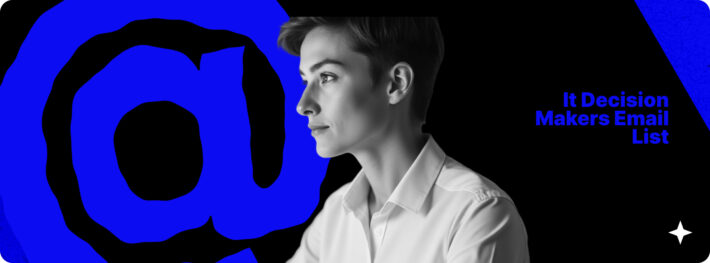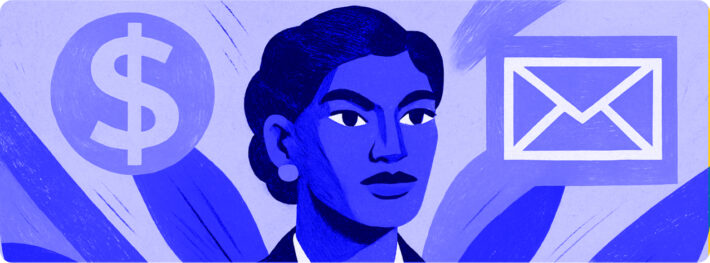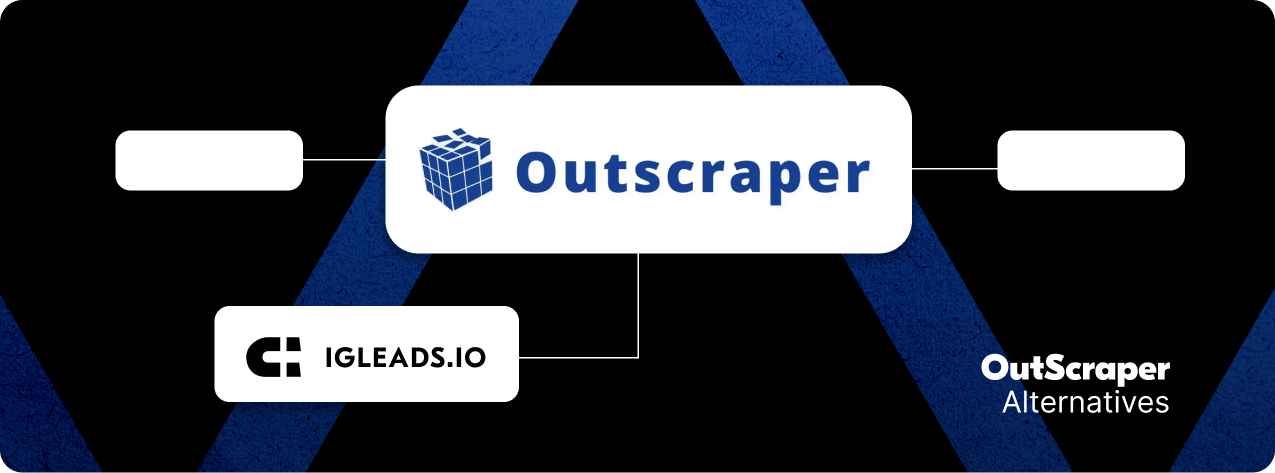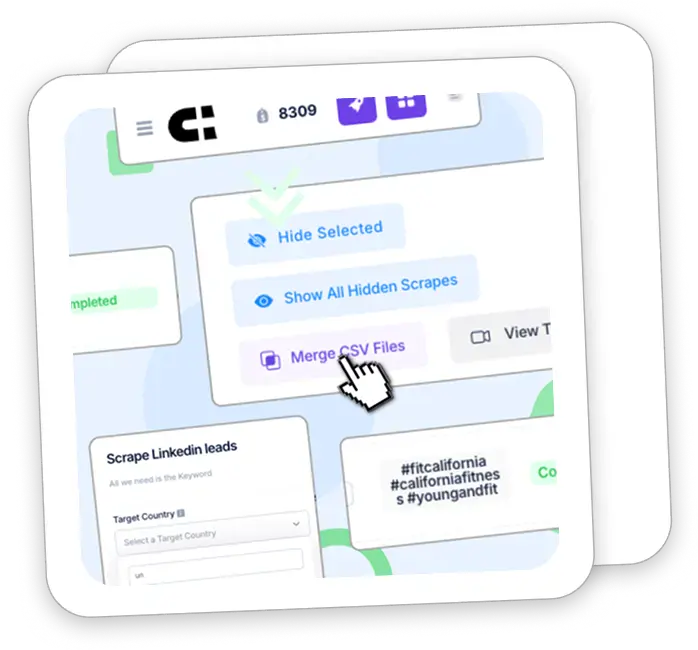Get Fresh Mining Industry Email List 2025

Looking for a mining industry email list in 2025? You can buy one or build your own. This guide shows both options. We’ll compare vendors, outline where to find mining contacts online, and walk through creating a segmented list with an email scraper like IGLeads. You’ll see how to filter by role, company type, or location, export to CSV, and keep your outreach compliant so your campaigns reach real decision-makers in mining.
Top 5 ways to get fresh mining industry email lists
If you want your outreach to mining professionals to actually work, you need more than just a random list of names; you need fresh, accurate, and segmented contacts. Here are five proven ways to build a mining industry email list that delivers results.
1. Use mining directories and industry databases
Several global and regional mining directories offer structured company and personnel listings. Sites like Mining Technology, InfoMine, and MiningWeekly often feature directories with company profiles, key contacts, and industry updates.
Look for:
- Supplier directories with buyer contact info
- Company listings by region or mineral type
- Executive bios and email formats
- Trade show exhibitor lists from events like PDAC or MINExpo
These sources are publicly available and often updated quarterly or annually. You can cross-reference contact info with LinkedIn or company websites for additional validation.
2. Scrape contacts from LinkedIn and mining groups
LinkedIn is a goldmine for mining professionals — from engineers to directors. You can use LinkedIn Sales Navigator to filter by industry, job title, region, or even certifications (like MSHA or PMP).
To extract mining emails:
- Connect manually or with personalized InMails
- Join mining industry groups (e.g., “Mining Professionals Worldwide”)
- Scrape profiles using tools like IGLeads.io, which captures public data by keyword, title, or company
This method is great for building niche lists like “procurement officers in copper mining companies” or “safety engineers in Canadian mining operations.”
3. Use automated tools like IGLeads.io to scrape mining emails
Email scrapers give you control and speed when building lists. IGLeads.io is designed for B2B professionals looking to extract high-quality contact data from:
- LinkedIn (filtered by job titles like “mine engineer” or “exploration geologist”)
- Google Maps (for local suppliers and operators)
- Industry forums and mining websites
- Public directories with business email patterns
- You can collect hundreds or thousands of contacts in hours, not weeks. All data is exported in CSV and ready for upload to your CRM or email platform.
4. Explore government and mining association records
Many countries maintain directories of licensed mining companies and permit holders. These include:
- U.S. Geological Survey (USGS) listings
- Canadian Natural Resources databases
- Australia’s Geoscience and mining tenement registries
- South Africa’s Department of Mineral Resources
You can often access names, company info, and permit statuses, which are great for building location-based outreach.
Industry associations like National Mining Association, AMEC, or Prospectors & Developers Association of Canada (PDAC) also publish membership directories with emails and phone numbers.
5. Buy from verified B2B list providers
For fast access, you can buy a segmented list from a reliable B2B data provider. Look for vendors that specialize in industrial or extractive sectors. Good providers offer:
- Country- or mineral-specific segmentation
- Data that’s updated monthly or quarterly
- GDPR/CAN-SPAM compliance
- 90%+ deliverability guarantees
- Replacement policies for invalid contacts
Make sure to avoid cheap, generic lists, they usually contain outdated or irrelevant contacts. Focus on providers that can show transparency around data sourcing and usage rights.
Each of these methods works, but combining them is even better. For example, scrape fresh data via IGLeads, enrich it with LinkedIn insights, and validate it with a deliverability tool before launching your campaign.
Benefits of targeting verified mining industry contacts
Marketing to the mining industry requires precision. From safety regulations to capital-intensive purchases, every touchpoint with this sector needs to deliver value, and that starts with verified contact data. A verified mining industry email list allows you to target the right professionals, reduce waste, and maximize conversions.
Here’s why verified contacts make a difference:
Reach decision-makers who influence major purchases
Mining operations rely on large-scale equipment, logistics, software systems, and environmental services. Verified email data helps you connect with:
- Site managers and operations directors
- Procurement officers in charge of supplier selection
- Health, safety, and environmental (HSE) officers
- C-level executives in mining firms and contractors
These roles directly influence multi-million-dollar buying decisions. With targeted messaging, your email lands in front of people with authority, not assistants or general inboxes.
Improved deliverability and reduced bounce rates
Outdated mining directories are full of bounced addresses and inactive emails. Verified lists use email validation, formatting checks, and role verification to ensure your campaigns land in real inboxes. This protects your domain reputation and helps you stay compliant with anti-spam laws.
Expect 90–95%+ deliverability when using a properly verified list — far better than the 60–70% average from outdated lead databases.
Better segmentation and campaign performance
With a clean, updated list, you can segment your outreach by:
- Mining type (coal, precious metals, lithium, aggregates, etc.)
- Company size (local operations vs. global conglomerates)
- Role (executives, site engineers, buyers, safety heads)
- Location (US, Canada, Australia, LATAM, Africa, etc.)
This level of targeting lets you create industry-specific offers, subject lines, and calls to action. You might run one campaign for gold mining engineers in Canada, and another for procurement directors in Australian iron ore operations.
Boost your ROI with focused messaging
Email marketing already delivers one of the highest ROIs in B2B, often over $40 per $1 spent with a verified, segmented mining contact list, and that ROI grows even more. Your messages go to real people with a need, which shortens sales cycles and increases conversions.
Multichannel value beyond email
A verified email list isn’t limited to email. These contacts also support:
- Custom LinkedIn Ad targeting
- Retargeting audiences on Facebook or Google
- Direct mail campaigns to HQs
- Personalized sales outreach via CRM
In an industry where face-to-face trust is big, having verified digital entry points gives you the edge for scaling those connections.
What to Check Before Buying a Mining Contact List (and How IGLeads Fits In)
Buying a mining industry email list can save time, but only if the data is accurate and relevant. Too many providers sell generic or outdated lists that frustrate sales teams. Here’s what to check, and how IGLeads approaches each factor.
1. How fresh is the data?
Mining projects and leadership roles change quickly. A list updated months ago may already be stale.
- Traditional vendors: Some refresh quarterly and claim 90%+ deliverability, often with manual checks.
- IGLeads: Instead of static refresh cycles, our email scraper pulls contact info in real time from public sources, company sites, LinkedIn, industry directories. That means your data is as recent as the last time the mining professional updated it.
2. Can it be segmented by mining type or geography?
Broad lists don’t work when you need precision.
- Traditional vendors: Filtering options depend on what’s pre-collected (e.g., “mining” as a single category).
- IGLeads: You define the filters. Search by mineral focus (coal, copper, lithium), geography (Canada, Australia, South Africa), role (procurement, operations, HSE), or company size. You’re not stuck with bulk contacts, you generate the exact segment you need.
3. Are emails validated and verified?
Bad emails kill deliverability.
- Traditional vendors: Some guarantee 95% accuracy and replace invalid contacts.
- IGLeads: Deliverability won’t match polished, human-verified lists. But what we offer is volume and recency, fresh data at scale. You can run your IGLeads exports through an email verification tool to maximize inbox placement while still benefiting from up-to-date contacts.
4. Is the list compliant with privacy laws?
Compliance is essential, especially when emailing across borders.
- Traditional vendors: Many promote “opt-in” lists but don’t always disclose sourcing.
- IGLeads: We scrape only publicly available information. You’re responsible for sending legally, including opt-outs, accurate sender info, and following CAN-SPAM, GDPR, CASL, or local laws. We keep sourcing clean; you ensure compliant outreach.
5. Does the provider offer a sample?
It’s smart to test before you buy.
- Traditional vendors: Some provide partial samples with redacted emails.
- IGLeads: Instead of samples, you can run a free trial search in our tool. This shows you exactly what contacts you can generate, with filters applied, before committing to a plan.
How to use a mining email list for marketing
Once you have a clean, segmented mining industry email list, the next step is using it strategically. The mining sector is unique — technical, B2B, and often conservative. So blasting generic messages won’t get results. Instead, here’s how to create high-impact campaigns that actually resonate with mining professionals.
Promote industrial services or solutions
Whether you offer heavy equipment, environmental tech, or fleet management software, your outreach must tie directly to a mining operation’s challenges — safety, cost-efficiency, or productivity.
Effective promotional strategies include:
- Highlighting ROI or cost savings from using your product
- Showcasing case studies from similar mines or regions
- Offering a demo, free audit, or trial period
- Emphasizing safety compliance, uptime, or automation
Mining buyers don’t just want features, they want proof your solution reduces downtime or increases yields.
Share reports, insights, and compliance updates
This audience values information that helps them stay compliant, competitive, or innovative. Content marketing works especially well here, and email is the perfect channel.
Send newsletters, one-pagers, or whitepapers with:
- Regulatory changes by region (OSHA, MSHA, local mining codes)
- Commodity market trend reports (gold, lithium, rare earths, etc.)
- Safety performance benchmarks and best practices
- Industry innovation news (AI, IoT in mining, electrification)
You position your brand as an expert, and your contacts begin to rely on you for high-value updates, not just pitches.
Invite prospects to webinars, expos, or product demos
Mining professionals attend conferences and webinars for networking, continuing education, and vendor discovery. Use your email list to drive attendance to:
- Live demos of your product in action
- Expert-led panels on ESG, automation, or regulatory risks
- Local events and mining expos (e.g., MINExpo, PDAC, Africa Mining Indaba)
Use a 3–4 part email sequence:
- Initial announcement (4+ weeks ahead)
- Key benefits + what they’ll learn (2 weeks before)
- Final RSVP reminder (2–3 days out)
- Follow-up with recording or key takeaways
Use the list for multi-channel remarketing
Your mining contact list is valuable beyond email. You can also:
- Build LinkedIn custom audiences for retargeting
- Use CSV uploads for Google and Facebook ads
- Send physical mailers to HQs or procurement offices
- Launch outreach workflows via your CRM (calls, SMS, social touches)
Start with email to qualify interest, then expand into follow-up on other channels for warmer leads.
Nurture over time with long sales cycles
Mining purchases often involve long consideration periods — weeks or months — and multiple stakeholders. That’s why drip campaigns and consistent follow-ups matter.
Set up a 4–8 email sequence that:
- Introduces your brand and value prop
- Shares proof or results
- Answers key objections
- Invites consultation or product tour
Your goal: stay top of mind, be helpful, and slowly earn trust.
When used with care and relevance, a mining industry email list becomes more than a one-time resource — it becomes a pipeline engine for reaching serious, high-value buyers.
Build Your Mining Contact List the Smart Way
Did we convince you that using IGLeads to build mining email lists is worth trying? With IGLeads, you don’t need coding skills or complicated setups. Just set your filters, click “Start,” and export fresh, accurate contacts in minutes. Sign up today and start reaching mining executives, engineers, and procurement managers faster.
Essential Guides for Lead Generation
- B2B Lead Generation Solutions – Guide for 2025
- How to Build a High-Quality B2B Email List for Outbound Marketing
- Buy Email Lists for Marketing in 2025: Complete Guide to Business Leads
- Why Scrape Google Maps? Use Cases for Sales, Marketing & SEO
- B2C Lead Generation: The 2025 Playbook
- 15 Best Lead Generation Companies for 2025
- Best B2B email list providers in 2025
- Top Lead Generation Agencies Compared (2025)
- 18 Best B2B Lead Generation softwares in 2025
- Lead Generation Guide: Strategies & Tools for 2025
Frequently Asked Questions
A mining industry email list is a collection of verified email contacts from professionals working in the mining sector, including engineers, procurement officers, project managers, and executives. These lists help businesses market their services or products directly to decision-makers in operations, exploration, safety, and logistics.
Businesses that sell to the extractive industry benefit most — including suppliers of heavy equipment, industrial tech, safety systems, logistics firms, and consulting agencies. These lists are also useful for event promoters, SaaS providers, recruiters, and researchers targeting specific mining verticals or regions.
The list is compiled using multiple methods: scraping public sources like LinkedIn and company directories with tools like IGLeads.io, mining association databases, government records, and verified third-party providers. Each entry is filtered for relevance and may be verified for job title, industry, and email deliverability.
Yes, high-quality lists follow major data laws such as CAN-SPAM, GDPR, and CASL. Data is sourced from public and opt-in databases, and contacts can request removal at any time. Using a compliant list protects your campaigns from fines and boosts your reputation with prospects.
Absolutely. You can segment your list by country, region, company size, mineral type (e.g., gold, coal, lithium), or job function like operations, HSE, exploration, or procurement. This makes it easier to personalize your outreach and improve response rates.




